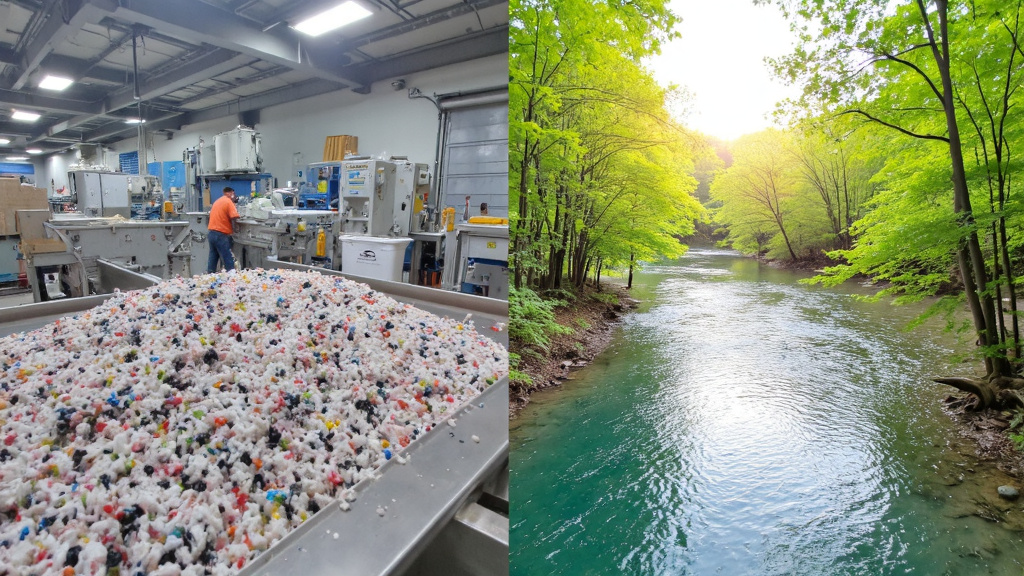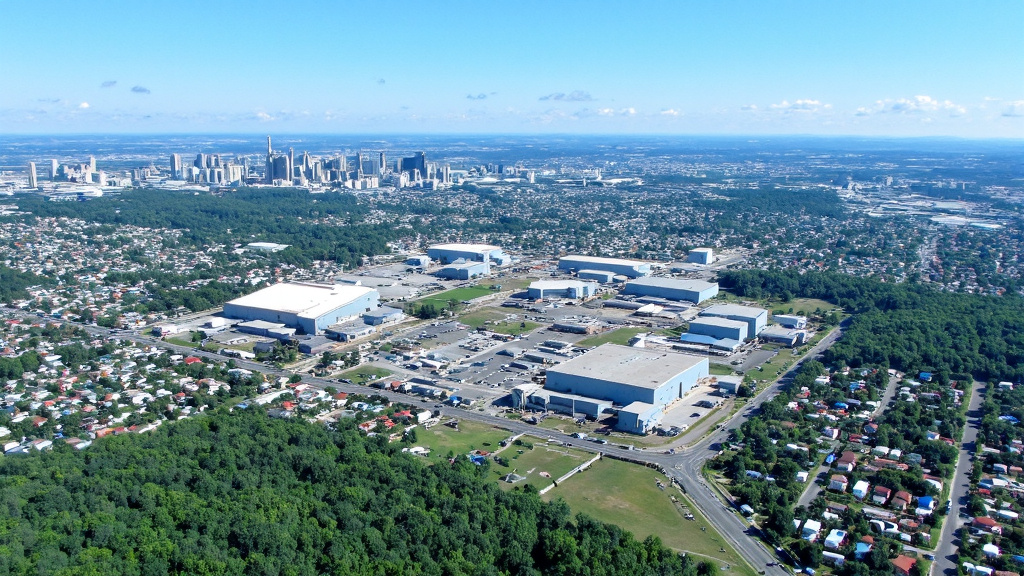5901 Botham Jean Blvd, Dallas, TX 75215
What Are the Environmental Benefits of Scrap Drop-Off Programs?
April 29, 2025Every year, Americans recycle over 130 million tons of scrap metal, preventing 29 million tons of carbon dioxide from entering our atmosphere. Scrap drop-off programs lead these conservation efforts by providing accessible ways to responsibly dispose of unwanted metal materials that might otherwise end up in already overburdened landfills.
These programs offer convenient collection points for residents and businesses to deliver recyclable metal items. From aluminum cans to copper wiring and steel components, these materials hold significant value when properly recycled.
The programs serve as crucial links in the recycling chain, connecting material generators with processing facilities that transform discarded items into valuable resources.
How Do Scrap Drop-Off Programs Reduce Landfill Waste?
Scrap drop-off programs play a crucial role in modern waste management by redirecting valuable metals from landfills back into the production cycle. Each ton of metal recycled through these initiatives saves space in the increasingly crowded landfills nationwide.
Beyond conserving space, these programs offer significant environmental benefits. When metals break down in landfills, they can release harmful compounds into soil and groundwater. Proper collection through drop-off programs prevents such contamination. Ferrous metals, which contain iron, can rust and leach into surrounding areas, while non-ferrous metals may release more toxic compounds over time.
The conservation of resources is equally important. Recycling one ton of steel saves approximately 2,500 pounds of iron ore, 1,400 pounds of coal, and 120 pounds of limestone, resulting in substantial energy savings compared to mining and processing new materials. This also preserves natural habitats that mining would otherwise disrupt.
Materials Accepted at Typical Drop-Off Centers
Drop-off programs accept a wide variety of scrap metals, making them versatile solutions for waste reduction. The separation of these materials begins with distinguishing between ferrous and non-ferrous metals. A simple magnet test helps participants and operators sort these materials efficiently, maximizing their recycling potential.
Ferrous metals commonly accepted at drop-off centers include:
- Structural steel from construction projects
- Old appliances like refrigerators and washing machines
- Cast iron items such as bathtubs and pipes
- Steel cans from food packaging
- Tools and hardware
Non-ferrous metals, which typically have higher recycling values, include:
- Copper wiring and pipes
- Aluminum cans, siding, and window frames
- Brass fixtures and decorative items
- Bronze components
- Stainless steel kitchen equipment
The effectiveness of these programs largely depends on proper preparation and sorting of materials. Clean, well-sorted scrap is processed more efficiently at recycling facilities. This involves removing non-metal attachments, separating different metal types, and ensuring materials are relatively free from contaminants like paint or chemicals.
Water and Soil Protection Through Proper Disposal
One of the most significant environmental benefits of scrap drop-off programs is protection against contamination. Improperly disposed metals in landfills can lead to leachate formation, a toxic liquid formed when rainwater filters through waste, picking up dissolved materials and contaminants.
Drop-off centers implement specific protocols to prevent environmental hazards. Storage solutions include designated containers that prevent exposure to rain and runoff, ensuring potentially harmful materials don’t migrate into surrounding ecosystems before processing.
The organized collection of scrap metals also facilitates proper handling of hazardous components. Items like batteries, electronic devices, or appliances containing refrigerants require special processing to neutralize environmental threats. Drop-off programs provide the infrastructure needed to manage these materials safely.
Local municipalities benefit from reduced waste management costs when effective drop-off programs operate in their communities. Diverting heavy metals from regular waste streams extends landfill lifespans and reduces the need for costly expansions or relocations, creating a financial incentive alongside the environmental motivation for supporting these initiatives.
Beyond immediate waste reduction, scrap metal recycling through drop-off programs contributes to broader sustainability goals. The reduced energy consumption associated with recycling metals instead of producing them from raw ore helps decrease greenhouse gas emissions across industrial sectors. This connection between local recycling efforts and global climate impacts highlights the far-reaching benefits of these programs.
| Metal Type | Recycling Benefits | Landfill Impacts |
|---|---|---|
| Steel | Energy savings up to 75%, reduces mining for iron ore | Takes up landfill space, can leach iron |
| Aluminum | Uses 95% less energy, conserves bauxite ore | Occupies space, potential leaching of toxins |
| Copper | Reduces need for new copper mining, water savings up to 90% | Possible soil and water contamination |
| Lead | Prevents air and water contamination | Releases toxins like lead into environment |
| Mercury | Prevents air pollution and health hazards | Releases mercury into air and water |
How Do Scrap Drop-Off Programs Conserve Natural Resources?

Scrap drop-off programs play a crucial role in conserving natural resources. Recycling metals instead of mining them from virgin ore significantly reduces the environmental impact of metal production. Mining often involves extensive land clearing and excavation, leading to habitat destruction and ecosystem disruption.
The conservation impact of metal recycling is substantial. Recycling one ton of steel conserves about 2,500 pounds of iron ore, 1,400 pounds of coal, and 120 pounds of limestone. For aluminum, the resource savings are even more impressive, as recycling uses 95% less energy than producing it from raw bauxite ore.
Mining activities typically consume vast amounts of water, and the extraction process can strain local water resources and cause contamination. Metal recycling generally requires significantly less water, helping to preserve this vital resource, especially in regions facing water scarcity challenges.
In addition to conserving water, scrap metal recycling reduces soil erosion and contamination. Mining operations often strip away topsoil and vegetation, leaving landscapes vulnerable to erosion. The chemicals used in metal extraction can leach into soil, making it unsuitable for plant growth. By reducing the demand for new mining, recycling programs help maintain soil health and stability.
The Sudbury region in Ontario, Canada, provides a compelling example of how reduced mining pressure through increased recycling can benefit local environments. Once known for its barren, moonlike landscape due to decades of nickel and copper mining, Sudbury has experienced remarkable environmental recovery. As recycling rates increased and mining operations adopted more sustainable practices, the region has seen the return of vegetation and wildlife. Lakes that were once highly acidified have recovered, and formerly barren hills now support growing forests.
Recycling also prevents valuable metals from ending up in landfills. When metals are disposed of rather than recycled, these resources are lost permanently, creating waste management challenges. Scrap drop-off programs ensure these materials remain in circulation, extending their useful life indefinitely.
The finite nature of metal resources makes recycling especially important. Many metals we rely on daily exist in limited quantities in the Earth’s crust. Through recycling, we can stretch these resources further, ensuring their availability for future generations while reducing the environmental damage associated with their extraction.
By providing convenient locations for people and businesses to bring unwanted metal items, scrap drop-off programs create an accessible pathway for materials to re-enter the production cycle rather than being discarded. This accessibility is crucial for achieving the high participation rates needed to make a meaningful impact on resource conservation.
Metal is unique among recyclable materials because it can be recycled repeatedly without degrading in quality. Unlike paper or plastic, which typically degrade with each recycling cycle, metals maintain their structural integrity. This property makes metals particularly valuable in a circular economy model where materials are kept in productive use indefinitely.
| Metal | Energy Savings from Recycling | Production from Recycled Materials |
|---|---|---|
| Aluminum | 95% | 5.5 million tons |
| Copper | 90% | 1.8 million tons |
| Steel | 60% | 85 million tons |
Conclusion: The Far-Reaching Impact of Scrap Drop-Off Programs

Scrap drop-off programs are essential in our collective effort toward environmental sustainability. These initiatives offer critical benefits by diverting valuable metals from landfills, significantly reducing greenhouse gas emissions, and conserving our planet’s finite natural resources.
Recycling metals like aluminum and steel through these programs requires much less energy than extracting and processing raw materials, creating a powerful ripple effect of environmental preservation.
Ready to make a positive environmental impact through responsible scrap metal recycling? Contact Okon Recycling at 214-717-4083 for expert guidance on recycling your scrap materials and join the movement toward a circular economy that benefits both businesses and our shared environment.
